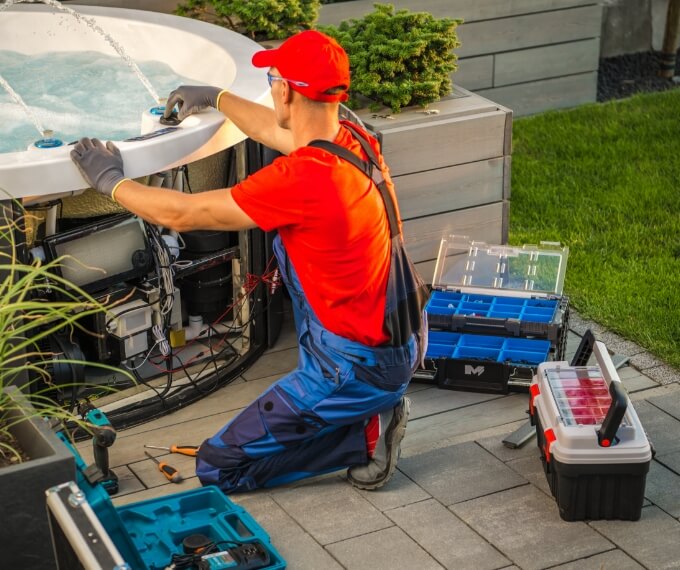
When installing a hot tub, ensure compatibility with the electric supply and use a dedicated circuit with specific voltage and amperage. Check the manufacturer’s guidelines or consult an electrician for proper installation. Consider factors like voltage (120V or 240V) and amperage (15A to 60A+). Install a ground fault circuit interrupter (GFCI) for safety. Choose appropriate wiring as per manufacturer specifications and use copper wiring for conductivity. GFCI protection is crucial for preventing hazards. Proper grounding techniques prevent shocks and fires. Hiring a professional electrician ensures safety and efficiency. Expert insights optimize performance and longevity.
Hot Tub Electrical Requirements
For proper installation, ensure your hot tub meets the necessary electrical requirements. Before beginning the installation process, it is crucial to confirm that your hot tub is compatible with the electrical supply available at your location. Most hot tubs require a dedicated circuit with a specific voltage and amperage rating to function safely and efficiently. Check the manufacturer’s guidelines or consult with a professional electrician to determine the exact electrical specifications needed for your specific hot tub model.
The electrical requirements typically include factors such as the voltage (usually 120V or 240V), amperage (ranging from 15A to 60A or more), and the type of wiring needed (often copper wiring of a specific gauge). Additionally, you may need a ground fault circuit interrupter (GFCI) to ensure protection against electrical shocks. Adhering to these requirements is essential to prevent electrical hazards and ensure the proper functioning of your hot tub.
Before proceeding with the installation, make sure to have a qualified electrician inspect your electrical setup and make any necessary upgrades to meet the hot tub’s electrical needs accurately.
Choosing the Right Wiring
To ensure the safety and efficiency of your hot tub installation, selecting the appropriate wiring with the correct voltage, amperage, and materials is crucial. The wiring for your hot tub should match the specifications provided by the manufacturer in the installation manual. Typically, hot tubs require a dedicated circuit with a GFCI (Ground Fault Circuit Interrupter) breaker to ensure protection against electrical faults. It is essential to use copper wiring for hot tub installations due to its conductivity and durability. The wire gauge will depend on the distance between the hot tub and the main electrical panel, with thicker wires needed for longer distances to prevent voltage drop. Additionally, the wiring should be rated for outdoor use and be able to withstand exposure to varying weather conditions. Consult with a qualified electrician to determine the appropriate wiring size and type for your specific hot tub model to ensure a safe and reliable electrical connection.
GFCI Protection for Safety
Ground Fault Circuit Interrupter (GFCI) protection is essential for ensuring the safety of your hot tub electrical installation. A GFCI is a device designed to protect against electric shock by quickly shutting off power when it detects a ground fault. In the context of hot tubs, where water and electricity are in close proximity, GFCI protection is crucial to prevent potential electrocution hazards.
For outdoor hot tubs, the National Electrical Code mandates the use of GFCI protection on all hot tub circuits. This requirement applies to both portable and permanent hot tub installations. GFCI protection can be integrated into the circuit breaker or installed as a separate GFCI outlet near the hot tub. Regular testing of the GFCI device is recommended to ensure it is functioning correctly.
Proper Grounding Techniques
Proper grounding techniques are crucial for ensuring the safety and functionality of your hot tub electrical installation. Grounding provides a path for electrical currents to flow safely to the earth, preventing the risk of electric shock and protecting against electrical fires. To achieve this, ensure that your hot tub is connected to a grounding rod made of copper or another approved material. The grounding rod should be buried in the earth near the hot tub and connected to the metal components of the tub using copper bonding wire.
Additionally, all electrical components within the hot tub must be properly grounded. This includes the heater, pump, control panel, and any other electrical devices. Ensure that all connections are secure and that no wires are exposed. Regularly inspect the grounding system to check for any signs of damage or corrosion, as these can compromise the effectiveness of the grounding.
Hiring a Professional Electrician
For optimal safety and efficiency in your hot tub electrical installation, engaging a certified electrician is paramount. A professional electrician possesses the necessary expertise to ensure that your hot tub is wired correctly, following all local building codes and safety regulations. They will assess the electrical requirements of your specific hot tub model, ensuring that the wiring can handle the load without any risks of overheating or electrical faults.
Additionally, a certified electrician will guarantee that the installation is done with precision, minimizing the chances of future electrical problems or safety hazards. They will also provide valuable insights on the best placement for your hot tub to optimize its performance and longevity. Hiring a professional electrician not only safeguards your investment but also provides you with peace of mind knowing that the electrical work is done accurately and up to standard. Prioritize safety and efficiency by entrusting your hot tub electrical installation to a qualified electrician.







